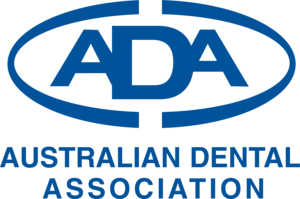Snoring Appliance
What Are The Signs And Symptoms Of Sleep Apnoea?
Tiredness/fatigue and irritability in the mornings and during the day
Unrefreshed sleep
Snoring
Daytime sleepiness
Depression
Frequently waking throughout the night to go to toilet or get a drink
Regular Morning Headaches
Worn teeth caused by clenching or grinding of teeth
Poor memory
Reflux problems
Dark circles or bags under or around the eyes
Regular Morning Headaches
How Do You Get Diagnosed?
Because sleep Apnoea occurs at night while you should be sleeping deeply, diagnosis isn’t as easy as a quick visit to your local GP or dentist.
There is a couple of options where to have a sleep study. The gold standard is the in-lab hospital sleep study where your sleep will need to be monitored by a trained professional who will also use a series of highly specialised instruments to monitor your body through a night’s sleep. But for those patients who struggle to sleep in strange surroundings, there is a range of in home sleep study options.
What Are The Different Types Of Sleep Apnoea?
OBSTRUCTIVE SLEEP APNOEA
Is the most common sleep related breathing disorder, where the upper airway repeatedly collapses during sleep. During an obstructive breathing event, someone with OSA continues to breathe but cannot get enough air into the lungs because the upper airway becomes too narrow or closes completely. The soft tissue in the back of your throat or tongue base collapses and then obstructs your airway resulting decreased oxygen intake. The brain detects the oxygen deficiency which then leads to multiple momentary arousals to draw breath – profoundly interrupting your deep sleep.
How Long Will It Last?
Results from most whitening treatments last one to two years so we recommend a combination of in chair and at home treatment, which we will explain further on your initial consultation. Depending on a person’s lifestyle habits such as smoking, drinking and oral hygiene management these results may not last as long. With regular professional cleaning, it will also keep your teeth whiter for longer.
What Should I Be Aware Of?
Over the counter kits, whitening toothpaste, sticky whitening strips, special ‘’paint’’ applied with a brush and ‘’one size fits all’’ plastic trays that are fitted with bleaching gel are cheaper than professional whitening, but any damage they cause may be expensive to repair. For example, some whitening products contain acids that can dissolve tooth enamel. Unsupervised, long term or repeated use of over the counter kits increase the risk of such side effects.
What should I expect after bleaching?
It’s all about having realistic expectations.
Most people will have whiter teeth after treatment. However, they may not become as white as you had hoped. Teeth yellowed or darkened by medicines, trauma or disease respond unpredictably and the dentist cannot anticipate if the treatment will work or to what degree. Darkly stained yellow or yellow-brown teeth frequently achieve better results than people with grey or bluish-grey teeth.
Please keep in mind that whitening treatments will not lighten artificial teeth. For example crown and veneers or porcelain, composite or other restorative materials. These types of restorations may need to be replaced at your expense to match newly whitened teeth.
Previous orthodontic treatments may cause teeth to whiten unevenly if any resin from the treatment was not properly removed from the teeth, either due to residual resin remaining on the teeth or over polishing upon removal.





